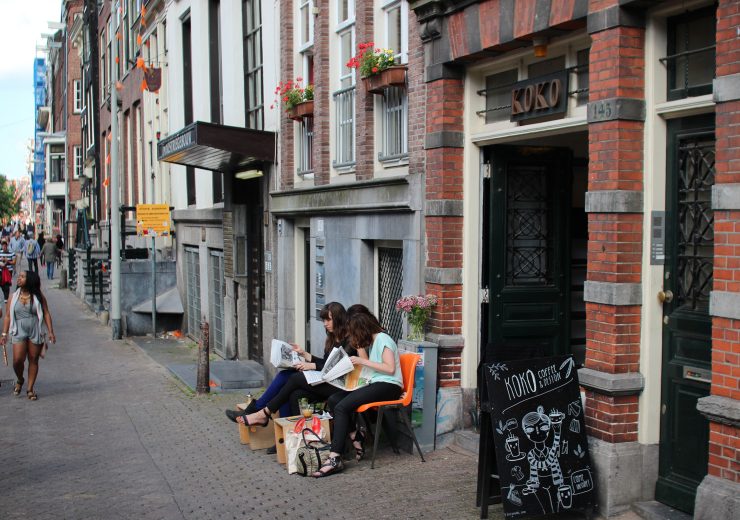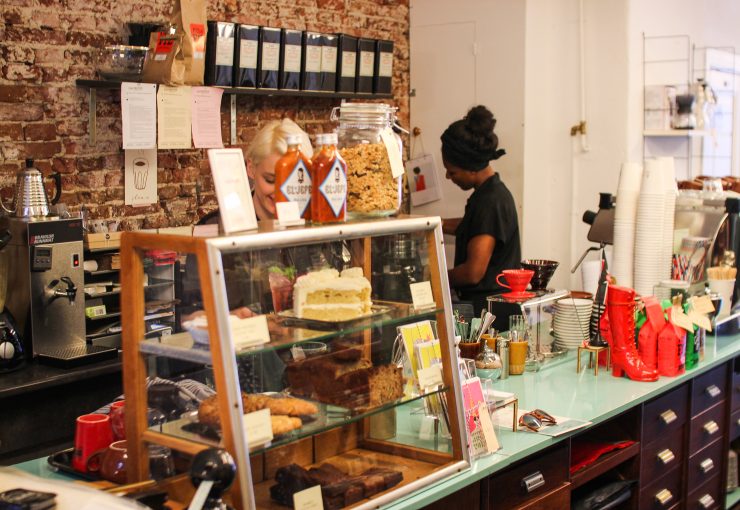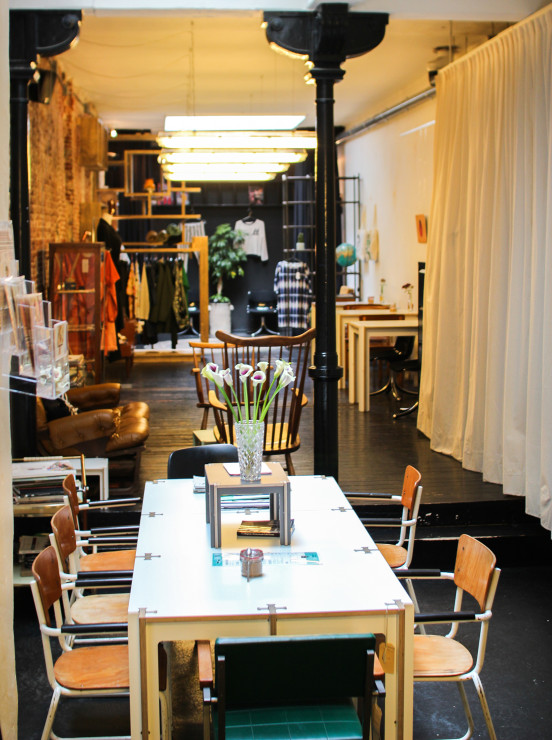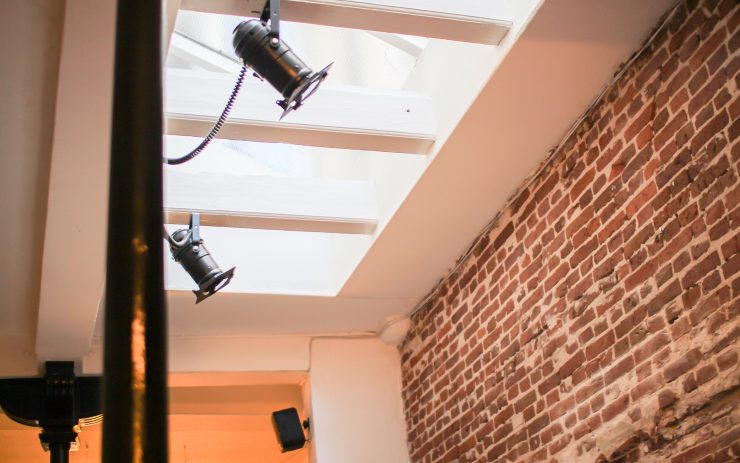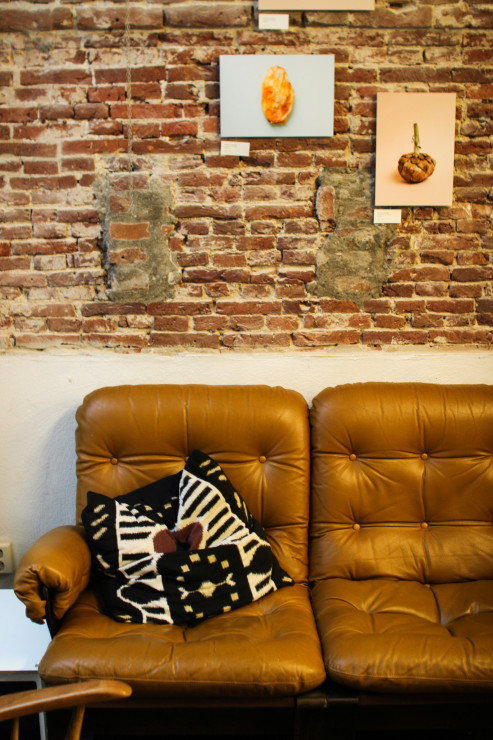The lessons you learn in the service industry never really leave you. In a previous life, before my time working with Sprudge, I was taught that you should rearrange the existing dishes to make as much space as possible when you deliver new dishes. Think of it like taking the utmost care of an aged relative, who might not be able to reach so well. That concept of hospitality contains multitudes; you feel it in white table cloth restaurants with multi-fork settings, of course, but in the right hands it can work–thrive, even–in far more casual settings.
It may seem rude to think of a guest as enfeebled, but let me tell you, when I crashed down exhausted in the adorably slight seating outside Koko Coffee & Design in Amsterdam, I felt deeply inept. The mere act of trying to fit water glasses onto the low stool that served as my table, perched on rough, picturesque canal side cobbling, was enough to tax me into ominous portents: surely a spill was impending, broken glass everywhere, a flutter of American apologies on the horizon.
And then, like a calm fog of comfort drifting up from the canal, an impeccably gracious barista brought out more drinks and casually managed to rearrange everything to fit an additional two filter coffees, two espressos and a slice of bread on that tiny stool. Everything was placed just so. I was being taken care of.
This was ten days into a trip to Europe, at the height of my immersion in the wonders of coffee shop staffers who actually bring you out your order instead of shouting it at you. This bit of hospitality often eludes North American specialty coffee shops, but European (and, some would say originally, Antipodean) specialty cafes have largely figured out how lovely it is to actually be properly served a beverage. But even by that measure, the service at Koko Coffee and Design felt special.
Koko is one of those increasingly common specialty coffee outlets: a shop of many retail things. Founded by owners Karlijn Timmermans and Caroline Kruijssen, the duo has set out to make Koko “a place for all senses and a place where people feel at home and get inspired.” Their selection of independent goods focuses on fashion from Scandinavian and Dutch designers like Libertine-Libertine, Monique Poolmans, and Stutterheim, alongside coffee-brewing gear, postcards, magazines, and other bits of art. The coffee, roasted by Caffenation in Antwerp, and their pastries, from local baker “De dikke lepel” (The Fat Spoon) help create an overall air of consideration and quality.
But what ties it all together is the obvious passion behind the concept. The staff could not have been more welcoming and professional: from offering suggestions on the coffee menu to answering inquiries about their featured artists, my service interactions at Koko were informative and enthusiastic across the board, conveying an obvious pride in the goods they sold.
Timmermans and Kruijssen said they were both “educated at a design fashion store where we had to work with very high customer standards” and that for them, the customer is all that matters: “The snob attitude you sometimes come across in the coffee culture is not at place at KOKO.” The coffee part of Koko’s equation came about because Timmermans had fallen in love with coffee culture while travelling in Australia and New Zealand. She wound up working in cafes there and at Espressofabriek in Amsterdam, before starting Koko in 2012. Kruijssen turned to Caffenation and Inspire in Breda for her coffee training. The pair said they “wanted to bring specialty coffee to a higher level. So not just a coffee bar or not just a fashion store; we wanted to bring both.”
After two years of research and business planning, the friends launched a successful crowdfunding campaign, and with the help of an additional bank loan, they opened their doors in September of 2012, in the Red Light District in Amsterdam. Of the location, Timmermans and Kruijssen tell me: “It’s a vibrant and lively neighbourhood. With a lot of drugs and prostitution problems in the past, it is an upcoming area right now.”
Before Koko, the shotgun space was an office for an architecture firm. The current design of the space revolves around showing off the solidly lived-in, almost casually monumental feel that seems to accumulate in the grand piles of bricks lining the canals in Amsterdam. Timmermans and Kruijssen said they were really lucky with the charm of their space, and since they were on a tight budget, they decided to “keep it low key,” stocking the space with second hand furniture foraged from across Holland and Belgium.
The overall effect is an inviting sort of relaxed chic, and since opening, they say they’ve become something of a “second living room” for the neighborhood, with a great mix of locals and tourists (they recently made it into some Scandinavian guide books) stopping in, giving the place a lively feel. My visit to Koko still says with me–it was such a thoroughly lovely place to pause, re-gather, be stimulated, and feel taken care of. The espresso was memorable, and I can’t wait to give my sister the set of gorgeous postcards watercolored by a local Amsterdam artist that I picked up for her.
We’re watching right now as the boom of integrating creative retail into speciality coffee reverberates across cafe design all around the world. Amsterdam’s cafe scene feels like it’s at the forefront of this trend, but whereas a place like Hutspot takes the concept to its maximal terminus, the decisions being made at Koko are much smaller, softer, and more genuine. Unfortunately, it’s all too common that the more different things a shop sells, the less invested they are in each one, and that lack of care makes it easy to feel disenchanted by places trying to shoehorn service into retail.
But Koko is not a “coffee bar + urban retail” target market neo-concept. It’s a fully realized expression of the dedicated passions of owners Karlijn Timmermans and Caroline Kruijssen: coffee, fashion, and above all, the happiness of the customers walking in the door. For the pair, it’s all about one simple fact: “people want to get surprised and inspired.”


